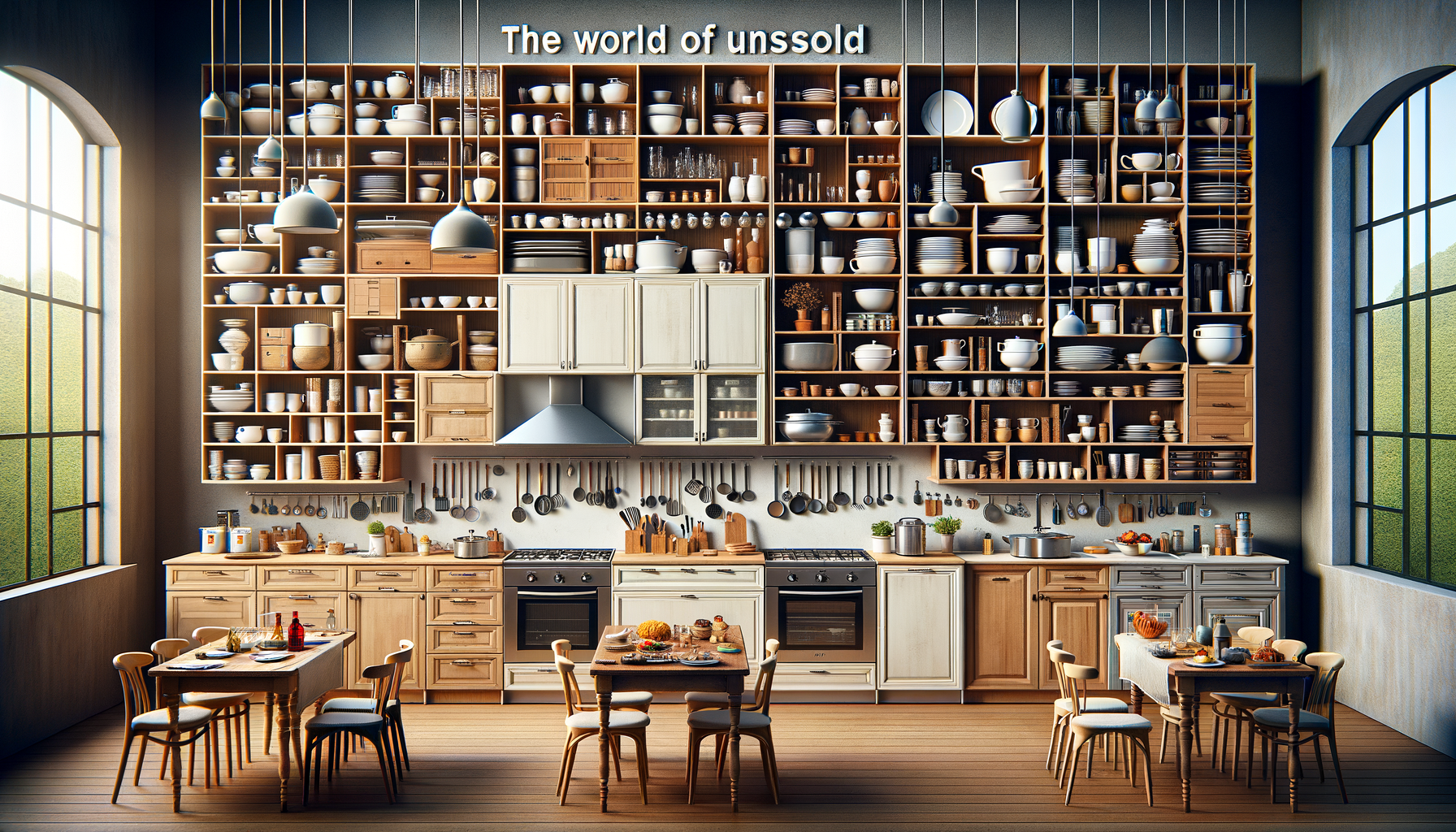Understanding Unsold Kitchens: What Are They?
In the realm of home renovations and real estate, the term “unsold kitchens” might not be immediately familiar. However, it represents a significant niche in the home improvement market. Unsold kitchens refer to pre-designed kitchen sets that remain unpurchased or uninstalled, often due to overproduction, changes in consumer preferences, or showroom updates. These kitchens are typically fully functional, complete with cabinetry, countertops, and sometimes appliances, but they have not found a home.
There are several reasons why kitchens may go unsold. Manufacturers might overestimate demand, resulting in surplus stock. Showrooms frequently update their displays to showcase the latest trends, leaving behind perfectly good, yet outdated models. Additionally, custom orders that are canceled or altered can add to the inventory of unsold kitchens. Despite being new and unused, these kitchens are often sold at a discount to clear space for new inventory, presenting a cost-effective option for buyers.
The concept of unsold kitchens is not only beneficial for consumers but also for manufacturers and retailers. By selling these kitchens at reduced prices, companies can recover some of their costs while offering consumers high-quality products at lower prices. This dynamic creates a win-win situation, fostering a market that thrives on opportunity and innovation.
The Benefits of Purchasing Unsold Kitchens
For homeowners and renovators, unsold kitchens offer numerous advantages. Firstly, the most apparent benefit is cost savings. Since these kitchens are often sold at a fraction of their original price, buyers can achieve a high-end look without the hefty price tag. This affordability makes unsold kitchens an attractive option for those working within a budget or looking to maximize their return on investment.
Another significant advantage is the immediate availability of these kitchens. Unlike custom kitchens that require time for design and production, unsold kitchens are ready for immediate installation. This can significantly reduce renovation timelines, allowing homeowners to enjoy their new spaces sooner rather than later. Additionally, the quality of materials used in these kitchens is typically high, as they were originally intended for retail sale at standard prices.
Moreover, purchasing an unsold kitchen can be an environmentally conscious choice. By opting for a kitchen that would otherwise go to waste, consumers contribute to reducing the environmental impact associated with manufacturing new products. This sustainable approach aligns with the growing trend towards eco-friendly living and responsible consumerism.
Challenges and Considerations
While unsold kitchens offer many benefits, potential buyers should be aware of certain challenges and considerations. One of the primary challenges is the limited customization options available with these kitchens. Since they are pre-designed, buyers may need to compromise on certain aspects, such as color schemes or specific layout preferences. It is essential for buyers to carefully assess their needs and ensure that the unsold kitchen aligns with their vision for the space.
Another consideration is the potential lack of warranty or support. As these kitchens are often sold at a discount, they may not come with the same level of after-sales service as fully-priced models. Buyers should inquire about warranty details and any available support before making a purchase. Additionally, installation might require professional assistance, which could add to the overall cost.
Lastly, availability can be a challenge, as the selection of unsold kitchens can vary greatly depending on the retailer’s inventory. Buyers may need to visit multiple showrooms or explore online marketplaces to find a kitchen that meets their requirements.
Where to Find Unsold Kitchens
Finding unsold kitchens requires a bit of research and exploration, but the effort can yield substantial rewards. Several avenues can be pursued to locate these hidden gems. Showrooms and kitchen design centers are often the first places to check. These establishments frequently update their displays, and the outgoing models are typically sold as unsold kitchens. By visiting these locations, potential buyers can see the kitchens in person and assess their quality and condition.
Online marketplaces and auction sites are also valuable resources for finding unsold kitchens. Many retailers list their surplus inventory online, providing a convenient way to browse and compare options. Websites dedicated to home improvement and renovation often have sections for clearance items, including unsold kitchens.
Networking with contractors and interior designers can also lead to opportunities. These professionals often have insider knowledge about upcoming sales or know of clients who are selling their unsold kitchens. By leveraging these connections, buyers can gain access to exclusive deals and options not widely advertised.
Conclusion: Embracing the Potential of Unsold Kitchens
Unsold kitchens represent a unique opportunity for homeowners, renovators, and businesses looking to enhance their spaces without breaking the bank. By understanding the market, exploring available options, and considering the challenges, buyers can make informed decisions that align with their needs and budgets. The world of unsold kitchens is one of innovation and opportunity, offering high-quality solutions that are both cost-effective and environmentally friendly.
As the demand for affordable and sustainable home improvement solutions continues to grow, the market for unsold kitchens is likely to expand. This trend presents an exciting prospect for those willing to explore this niche, providing access to exceptional quality kitchens at a fraction of the cost. By embracing the potential of unsold kitchens, consumers can create beautiful, functional spaces that reflect their style and values.

Leave a Reply